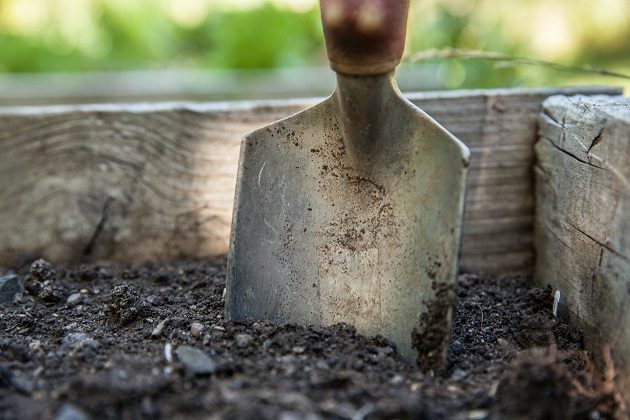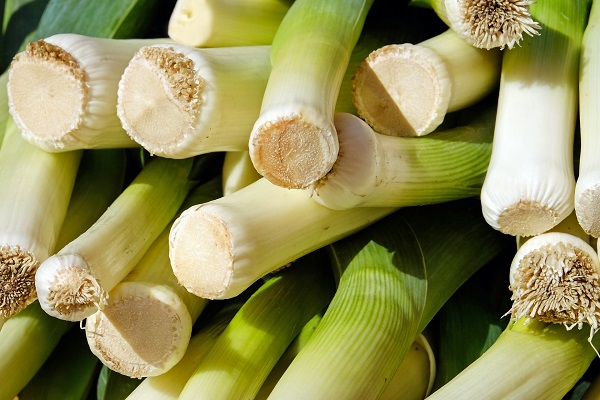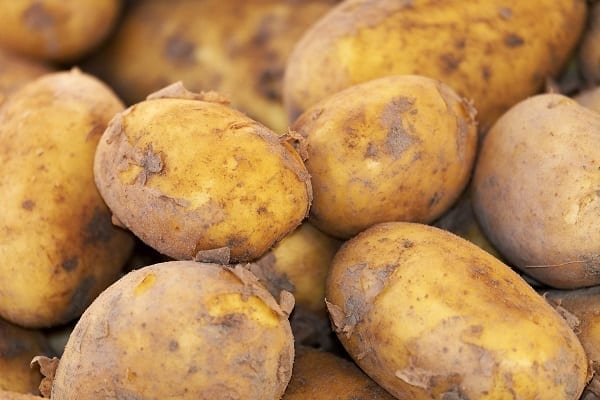It may be the tail end of winter, but February is a great month to head back to your vegetable patch or allotment and get it ready for another year of sowing, growing and enjoying your produce. There are also a number of vegetable / salad crops that can be started indoors.
Preparation

As long as weather permits, one of the most important things to do this month is to prepare your beds for your spring sowing. Clear weeds and stones, dig over and incorporate plenty of compost or well-rotted manure. If you favour a no-dig approach, you may choose to just layer a good layer of organic matter on the soil then place a plastic sheet over for a few weeks, which will help the soil warm as well as tackle weeds.
Clean cloches and set in place so they can warm the soil.
Sowing & Planting
Chit Potatoes
February (and March) are the months to start ‘chitting’ your potatoes, i.e. letting them sprout so they grow faster and stronger. To ‘chit’ your potatoes, in February – March put them in a tray (or eggboxes also work well) with shoots facing up. Place the tray somewhere light, protected from both extreme cold or heat. Leave for around 6 weeks, until the sprouts reach 1.5-2.5cm long.
Read our guide to growing your own potatoes for more information.
Sow in the Greenhouse
Aubergines and Asparagus peas can be sown in the greenhouse in February ready for a summer harvest. You can also sow cucumber, tomato and sweet pepper seeds if greenhouse conditions are warm enough, or use a windowsill propagator to get your seedlings going.
Sow Indoors All Year Around
Some plants, like pea shoots, can be sown indoors all year round.
Sow Outdoors Under Cover
If you live in milder parts of the UK, you can sow beetroot, chicory, radishes, spinach and lettuce and early turnip varieties outdoors but under cover (e.g. under a cloche). If the weather is particularly cold still, it may be better to wait until March.
Plant Outdoors Now
Some onion sets can be planted as early as February (although most require waiting until March or later in spring). Read our guide to growing and harvesting onions for more tips.
This is the last month to plant garlic in the ground. If the soil isn’t frozen, hardy broad beans can also be sown directly into the ground.
Raspberry and blackberry canes plus rhubarb crowns can also be planted out if the soil isn’t frozen or waterlogged.
Harvesting

There are just a small number of vegetables that you may be able to harvest at this time, that are perfect for warming soups and stews, these include: Leeks, parsnips, kale, carrots, swede and cabbage.
Other Key February Grow Your Own Activities
Last Chance to Prune Fruit
February is the latest you should prune apple and pear trees before they start their spring growth.
It is also the last month to prune redcurrant or gooseberry plants.
Your February Grow Your Own Toolkit
For preparing beds & borders:
• Garden spade/garden fork, compost/manure, plastic sheet (if intending to cover after digging), bucket & detergent & scouring brush (for cleaning cloches)
For chitting potatoes:
• Your choice of seed potatoes, seed trays, potting compost (later on, you will also need a grow bag to plant into, or a clear patch in your garden/allotment)
For sowing indoors:
• Seeds, seed trays, potting compost, (you may need a greenhouse heater if you are planning to grow in a greenhouse in February)
For sowing outdoors:
• Seeds, Spade/trowel, cloches or grow frames for placing over plants that need a degree of extra outdoor warmth and protection if planted in February.
Was This Article Helpful?
Join the Hillier Gardening Club to get the latest gardening news and advice
Find Out More

